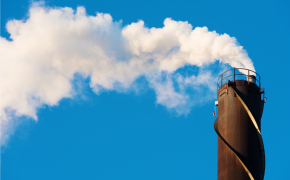DOT and EPA Release Proposal to Roll Back Obama-era Emissions Standards for Automobiles
On August 2, 2018, the Department of Transportation’s National Highway Traffic Safety Administration (NHTSA) and the Environmental Protection Agency (EPA) issued two related, proposed rulemakings, which together comprise the Safer Affordable Fuel-Efficient (SAFE) Vehicles Rule. The proposed rule, if adopted, would curb NHTSA’s Corporate Average Fuel Economy (CAFE) standards and EPA’s tailpipe carbon dioxide (CO2) emissions standards for passenger cars and light trucks for model years (MY) 2021 through 2026 that were issued in 2012. The proposal also asserts that the Energy Policy and Conservation Act of 1975 (EPCA), which requires NHTSA to set national fuel economy standards for new motor vehicles, preempts any state, including California, from imposing or enforcing its own vehicle fuel economy standard.
The proposed rule would maintain the CAFE and CO2 standards applicable in MY 2020 for MYs 2021 through 2026. The estimated CAFE and CO2 standards for MY 2020 are 43.7 mpg and 204 g/mi for passenger cars and 31.3 mpg and 284 g/mi for light trucks, projecting an overall industry average of 37 mpg, as compared to 46.7 mpg under the standards issued in 2012. These revised standards would constitute a single set of national fuel economy standards. The proposal also seeks to exclude CO2-equivalent emission improvements associated with air conditioning refrigerants and leakage (and, optionally, offsets for nitrous oxide and methane emissions) after MY 2020.
The proposal is a de novo rulemaking and, according to the agencies, based on an “entirely new analysis reflecting the best and most up-to-date information available” demonstrating that the standards currently in place are not feasible from an economic standpoint.
In support of the proposed rulemaking, NHTSA and EPA project that the rule will reduce the number of lives lost annually in fatal vehicle crashes by 1,000 individuals, reduce the average ownership cost of new vehicles by $2,340, and save manufacturers $252.6 billion in regulatory costs through MY 2029. The agencies also acknowledge that the rule would increase daily fuel consumption by 2-3%, increase global average temperature, and increase the atmospheric CO2 concentration.
Public comments will be accepted for 60 days, until October 1, 2018.
Implications for California’s Independent Emissions Programs
Not only does the proposed rule find that EPCA preempts California’s fuel economy standards, it also attempts to foreclose California from adopting or imposing emission standards independent from the federal program. Specifically, the proposed rule would withdraw EPA’s January 9, 2013, Clean Air Act (CAA) waiver of preemption for California’s Advanced Clean Car program, its Zero Emissions Vehicle mandate, and its Greenhouse Gas standards applicable to model years 2021 through 2025.
In that regard, Title II of the CAA generally provides that California may obtain from EPA a waiver of the CAA’s Section 209(a) preemption clause. Without such a waiver, Section 209(a) prohibits states from (1) adopting or enforcing an emissions-related standard for motor vehicles or motor vehicle engines and (2) requiring certification, inspection, or other approval relating to emissions-controls. Prior regulatory interpretation and case-law have been applied to provide that California is presumably entitled to receive such a waiver unless the EPA Administrator finds one of the following: (i) California’s determination that its standards in the aggregate will be at least as protective of public health and welfare as applicable Federal standards is arbitrary and capricious; (ii) California does not need independent standards in order to meet compelling and extraordinary conditions; or (iii) California standards and accompanying enforcement procedures are inconsistent with Section 202(a), which requires the EPA to establish standards applicable to the emissions of any air pollutant, including GHGs, for new motor vehicles.
In proposing to withdraw California’s waiver, the rule concludes that California’s programs are unnecessary to meet “compelling and extraordinary” conditions because California programs address environmental considerations related to CO2 that are neither specific to California, nor caused by consequences of CO2 emissions that are unique to California such that the programs’ standards would provide a remedy that would also be unique to California.
Conclusions
The proposed changes to national fuel economy and emissions standards will likely meet substantial opposition from environmental and consumer groups alike. The larger challenge here, however, will almost certainly involve the courtroom battle that will take place between California and the federal government if the proposed rulemaking becomes final. California has already announced its intention to fight this proposed rulemaking and to work diligently to maintain its right to a waiver under the CAA, noting little hesitancy when it comes to suing both EPA and NHTSA.
While the proposed rule may release new vehicle manufacturers from meeting more burdensome regulatory standards, the impact of the rulemaking may be an extended period of uncertainty in the automotive industry and two potentially conflicting markets.
The Proposed Rule in its entirety can be found here.
Beveridge & Diamond’s Air and Climate Change practice group helps private and municipal clients navigate all aspects of compliance with Clean Air Act regulations for criteria pollutants, hazardous air pollutants, greenhouse gases, and permitting processes. For more information, please contact the authors.











